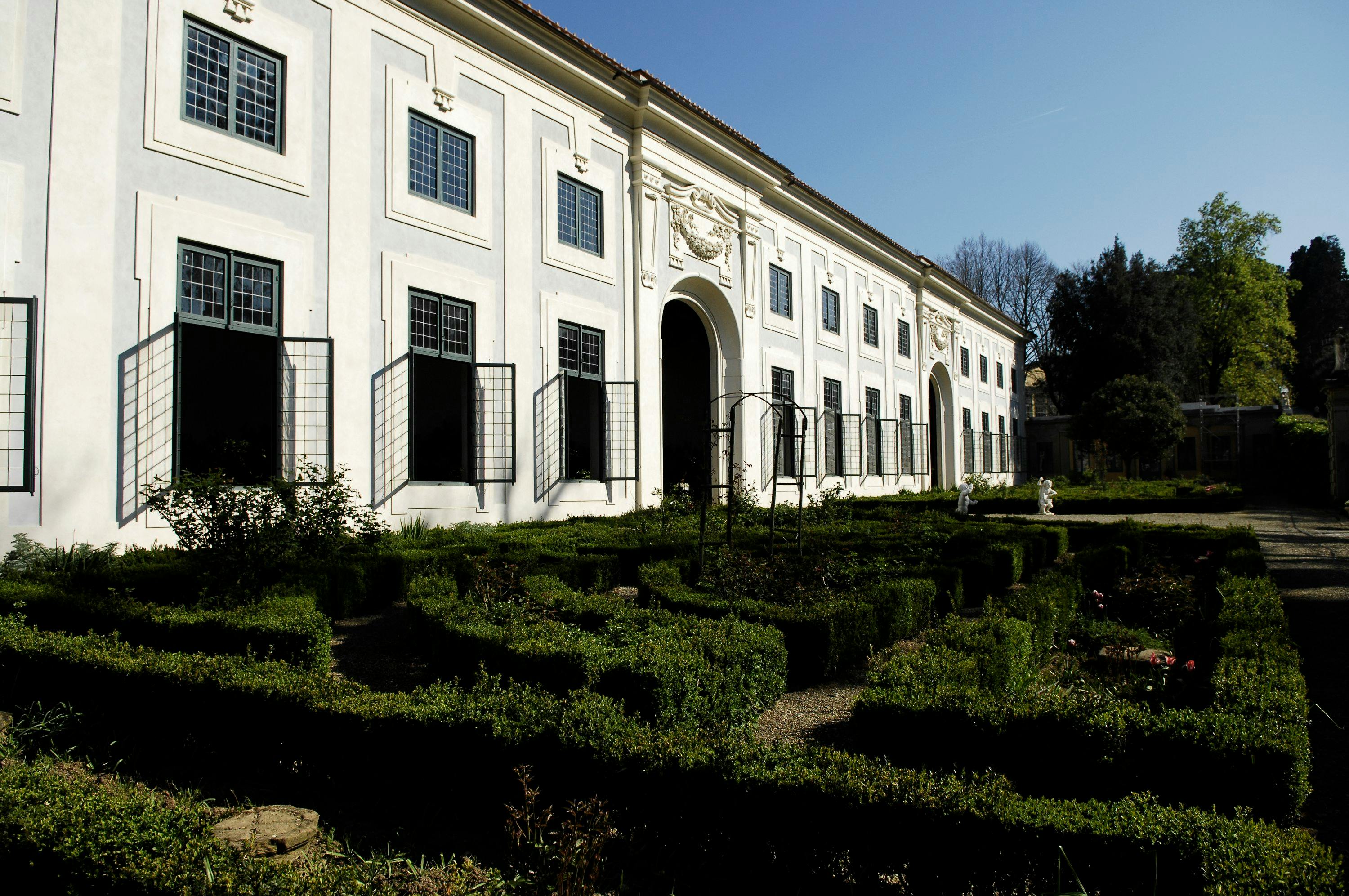Lemon House
Zanobi del Rosso; Giuseppe Cacialli (ampliamento)
The Lemon House was built between 1777 and 1778, after a design by Zanobi del Rosso in the location of the former Menagerie erected by Grand Duke Cosimo III de’ Medici in 1677 and dismantled by Grand Duke Peter Leopold Habsburg-Lorraine in 1776, when the animals were transfered to the Belvedere’s Menagerie in Wien. The construction of the Lemon House became necessary as the “Stanzonaccio” (Warehouse) designed by Giulio Parigi in the “Giardino della Lavacapo” and other premises by the entrance of Porta Romana were no longer able to provide enough winter shelter for the collection of citrus trees displayed throughout the Gardens, in particular in the Giardino dell’Isola (Island Garden).
Still used to house around some 500 citrus plants from the Gardens, the Lemon House faces south and measures 106 by 8 meters. The façade is punctuated with pilaster strips and features a regular repetitive structure of four spans, each formed of four large windows topped by four smaller framed windows. The succession is interrupted by three identical portals crowned with garlands decorated with fruits; in its upper part, the façade is closed off by a long carved cornice. The symmetrical surfaces between the pilaster strips are decorated in Lorraine green. Inside, two long walls of different heights enable citruses to benefit from the sunlight without getting in the way of one other. The left side of the Lemon House was enlarged in 1816 by Giuseppe Cacialli to create a space equal in width to two windows. Cacialli also oversaw the construction of a small room on the same side, designed for use as a storage for material and equipment with an office annex for the Head Gardener (“Scrittoio del Giardiniere”). This room preserves the late eighteenth-century cabinets which were once used to display a collection of citrus casts. Cacialli was also entrusted with the Neoclassical design of the two wings’ façades, which form the edge of the garden to the right and left.
The area below the Lemon House consists of a garden with four large flowerbeds designed for growing roses. Along the wall at the base, there are various parterres originally conceived to propagate plants. The garden is closed off by two high walls which line the boulevard and railing designed by Cacialli in 1822, constructed from a horizontal rope-like design supported by bars and topped with pineapples, spears and spades. The railing stands between two smooth ashlar pillars each topped with classical statues of Muses.
